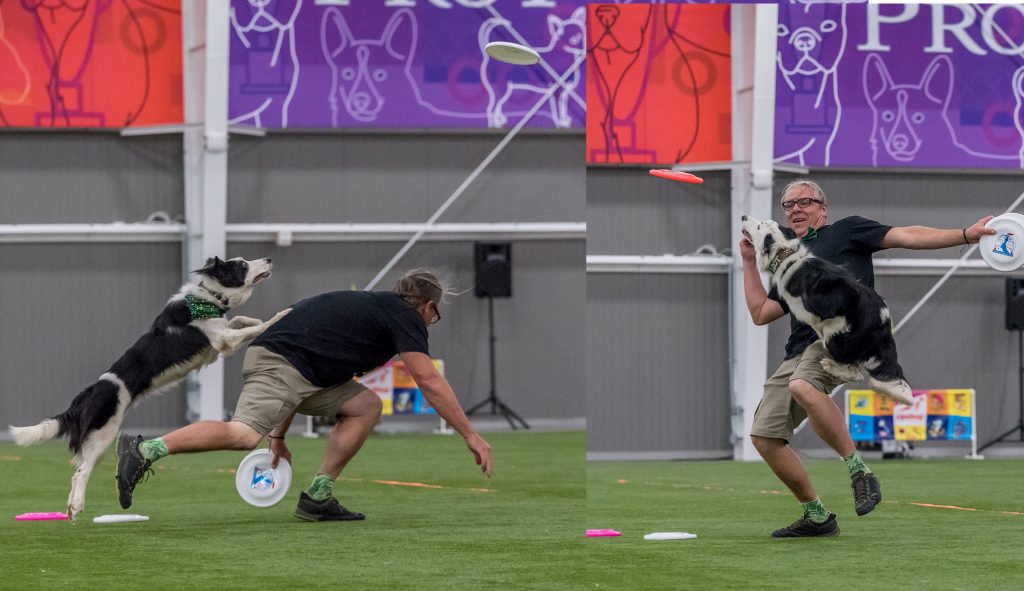
Daily Flow: Reframing Vault Timing
If you are timing your vaults, you are trying to hit a bullet with a bullet. “Was I late,” is a phrase loaded with meaning. Tired of being late? Ask yourself, “Late for what?”
If a Vault Falls in the Forest…
It reminds me of that age old adage,”What if I called a vault and didn’t throw it…”
As if a vault could even happen without your throw. It sounds silly or strange, I know, and that’s because it is silly and strange. So why do we all act as if this is the case?
Why are we constantly rushed by our dog?
Unpacking the Timing Analog
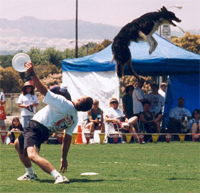
Unpacking this further, it puts the handler on the defensive and makes us reactive to the vault. We have to work hard to try to “hit that window” of when the dog will be running by. And whatever you do, make sure you throw it to the right spot Spot is a “go to a place”, or “go to a mat” behavior. This means that the dog seeks out and performs a duration behavior on a spot of the handler’s choosing. A... More. I was unaware that the handler is at the mercy of the dog’s timing and line on a vault.
Spot is a “go to a place”, or “go to a mat” behavior. This means that the dog seeks out and performs a duration behavior on a spot of the handler’s choosing. A... More. I was unaware that the handler is at the mercy of the dog’s timing and line on a vault.
The more you unpack vault timing and being late, the more absurd it starts to look. It’s a no win situation and it reinforces the wrong skill; a vault is not stuff it into a flying dog’s mouth as it flies by.
A Tale of Two Skills
To vault is to leave the ground for the target using the handler’s body as a leaping platform. It is pretty tough to be late when the target presentation, the throw, pulls the dog off the ground. In fact, when looked at from the perspective of leaving the ground for the target, to be late on a vault is a non-sequitor, it literally, does not compute. “You mean you didn’t throw?” “You mean the dog left early?” “OMG!!! Did the dog run into you? Are you both OK?”
When looked at as the dog leaving the ground for the target, how can you be late and have anything like a vault happen?
Some of you might think that this word nerdery is interesting, or perhaps it’s a clever distraction, but I think it is crucial to performance of disc dog vaulting. Teams that are focused on time are not doing the same skill as teams focused on leaving the ground for the target. There is little in common from a conceptual understanding point of view.
Same Skill, Only Completely Different
There is a big difference between a dog going up and getting something and a dog snatching something as it flies on by. Vaults that see the dog collect and load for the target are completely different than vaults that see the dog perform collection on the handler’s body. Putting the skill together while the dog is on the ground is more mature, safe, and likely to be successful.
A dog that leaves the ground for the target is showing drive. A handler that puts a disc up so the dog leaves the ground for the target is showing intent. Vaults from the ground have greater separation. The team are showing long scale timing, connection, and teamwork. Vaults that have the dog leaving the ground for the target are more mature skills that require greater skill to perform. That’s just a fact.
Feel free to stop frame on the release of each disc by the handler. Check to see whether the dog leaves the ground for the target or not and compare the performance of each. Seeing is believing.
Maturity and Scoring of Vaults
It seems to be an exclusive, dividing line in the game too. It is (*or should be!) the difference between the vaults that score in the 7-10 level vaults and the 6-7 point vaults. It’s also one of the major features of the skill that we use in that 7-10 level scoring range to fairly evaluate and assess the vault.
The defining aspect of a disc dog vault’s value in a routine is not whether or not the dog catches. The catch is a critical aspect of scoring a vault, but it isn’t the only one and no where near the most important. Collection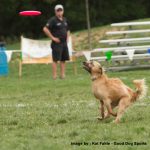 The act of preparing for a leap. Breaking stride for leaping or changing direction, collection is a key moment in the leaping process. More, timing, separation, landing, all are “more important” when it comes to computing a score than the catch.
The act of preparing for a leap. Breaking stride for leaping or changing direction, collection is a key moment in the leaping process. More, timing, separation, landing, all are “more important” when it comes to computing a score than the catch.
Launch Safety: Flexible Targeting and Abort Button
Safety also shows a critical distinction. A vault that leaves the ground for the target is one where the dog has complete control, from initial collection on the ground to process position and trajectory to target the disc. There is also the ability to abort before takeoff.
Mistakes in placement by the handler are budgeted in to the beginning of the skill. If the tolerances of that placement mistake are too great, the dog, literally cannot go – “Launch canceled due to… weather.” Mistakes are be weighed by the dog before leaving the ground, giving the dog a choice to vault or not. The dog has complete choice to abort the mission.
Contrast this control and abort capability with a dog who is on schedule to receive a disc on a fly by. Mistakes can’t be assessed until the dog is mid-skill and mistakes are assessed in a state of Prey Driven madness. There is no abort button here. All the timing in the world won’t make this skill resemble a dog leaving the ground for a target.





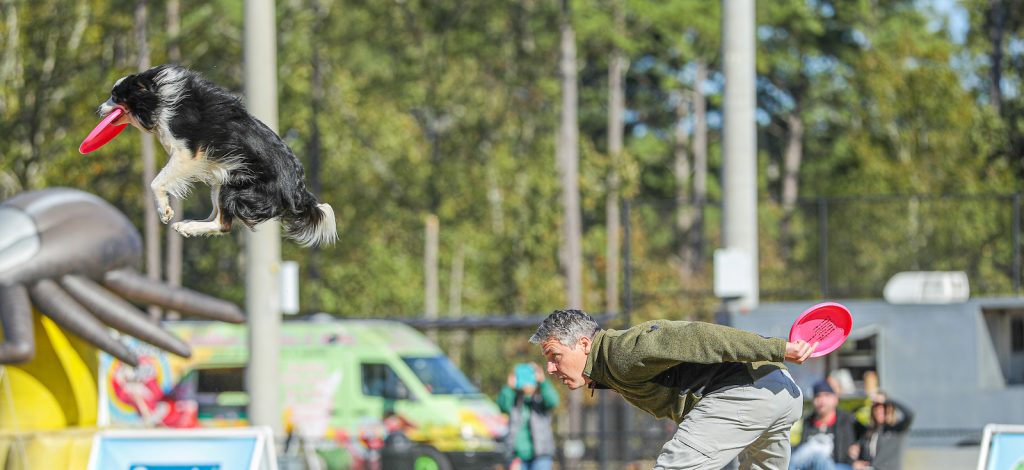
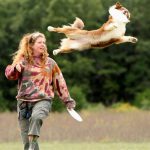



Responses